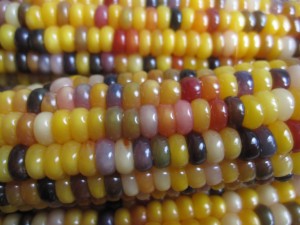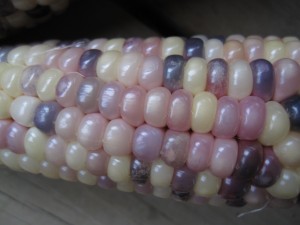No, your cucumbers have not hybridized with your melons.
I’ve been fielding different versions of the same question a LOT lately.
Three different people have sent pictures of “cucumelons” telling me they planted cucumbers next to their melons, and now the cucumbers look strange, so they’re concerned that they have cross pollinated with the melons. One person planted what was supposed to be a red raspberry next to their yellow raspberry, but the new plant is producing yellow fruit, so they think that it must be cross pollinating with their yellow plant, causing the fruits to turn yellow. Not to mention similar queries about tomatoes, peppers, and watermelons. It seems like every time a piece of produce turns out looking differently than what people expect, they blame pollen from the plant next to it.
I’m sure the highly educated readers of The Garden Professors know this already, but to clarify, there is a very simple reason why you don’t need to worry about one plant pollinating another plant and changing the quality of your produce UNLESS you are planning on saving seeds to grow for the next year.
When a flower is pollinated and starts developing into a fruit full of seeds, it is only the seeds themselves that combine the genetics of the two parents to develop into something new. Everything else – the flesh of a tomato, or cucumber or melon or raspberry – is produced solely by the mother plant, and the daddy of those seeds inside doesn’t matter a bit. Think about when a woman is pregnant… the identity of the father of the child inside her doesn’t change the character of the skin of her belly.
If you want to save seeds of your plant for next year, it is another matter, and you should be sure to isolate or (better yet) hand pollinate different varieties of the same species from each other to make sure they don’t hybridize unintentionally. You still don’t need to worry about your cucumbers and melons, however – they won’t hybridize by chance in your garden. If a plant doesn’t produce the right colored fruit or flower, most likely it was just mislabeled at the nursery. Grow a strange looking cucumber, chances are it was left on the plant too long. Cucumbers are harvested and eaten when young and immature, leave them too long and they get… strange looking. No need to blame it on the melons next to them.
There IS one exception to this, one common plant in the garden where the source of pollen makes a huge difference in what you harvest: Corn. Corn is the exception because what we’re eating is the seed itself, not the fruit produced by the mother plant surrounding the seed. That’s why if your sweet corn gets a dose of pollen from the field corn the farmer is grown next door, it comes out starchy and not sweet.
It also makes breeding colorful corn for fall decorations REALLY fun… Because when you see a multicolored ears of corn like this from my garden last year:

You can carefully pick out just the seeds showing the colors you like best, say the palest blues and pinks, sow them together the next year, and get something looking like this:

Or plant all the darkest kernels together and get this:

Not to throw a wrench into your descriptions, but there are some other plants that the fruit is effected by pollination. The one that comes to mind first for me is persimmon (Diospyros kaki) because certain varieties are astringent when seedless (not pollinated) but are non-astringent when seeds are present (pollinated).
Thad,
Good point, I should have mentioned that in the post — certainly, whether a particular fruit is pollinated or not makes a huge difference (in most cases, no pollination means no fruit at all) but provided the fruit is successfully pollinated, the specific genetics of the pollen that did the pollinating doesn’t matter.
Oddly enough when I grow chilies, they will cross breed easily and the effect is immediate in that years heat meter. I love Chili Rellenos but I dislike the blandness of the common California Chilies normally sold in store for use in this dish. So I inter-plant between California Chili plants a Jalapeno or Serrano chili Pepper plant and the effect is wonderful, I get a California Chile with heat which is what I want that season. I have never had to plant sees for next year to acquire that hotter flavour.
Kevin,
I’ve not heard that before, but perhaps it isn’t surprising, given it is the seeds in the chili, not the fruit itself that is the primary source of the heat.
I love the tip on breeding corn. I currently can’t convince corn to grow, but when we move to a different location (or I figure out why it doesn’t like MY yard) I will definitely have to play with that.
Does the same hold true for beans? I’d like to play at being Gregor Mendel and do some crosses of my favorite varieties. It would be great if I could see the results the same season.
I wondered the same thing, so a few years ago I asked a friend who breeds beans professionally, and they said no, the color if the bean is controlled by the mother plant. Once you make a hybrid you’ll have to plant them to see what color beans they make.
Thanks for that information. I don’t mind waiting a year. It’ll still be fun and interesting.
Lol our uncle just planted cucumber next to bitter gourd and IDK how but the cucumbers taste bitter.